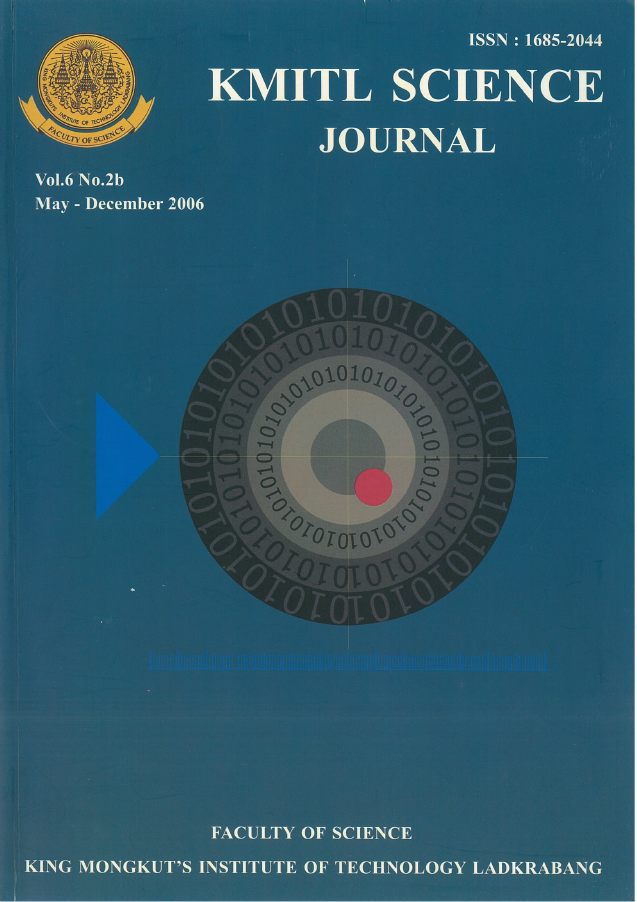Fabrication of Lead-Free High Refractive Index Glass Using Local Raw Materials
Main Article Content
Abstract
High refractive index glass can be made by adding a heavy metal ion such as lead into glass. Lead contained glass can be melt at low temperature. Due to the harmful effects of lead, there are several attempts on using other materials to replace lead as much as possible. In this study, the lead-free high refractive index glasses were made by using local raw materials and by adding barium carbonate to replace lead in a mixture with various contents. The main composition of the mixture consisting of glass sand, dolomite, feldspar, limestone, sodium carbonate and boron oxide was poured into the crucible and melted in an electric furnace, in the normal atmosphere at a temperature of 1250°C for 6 hours. The refractive indices of glass specimens were found to increase from 1.5602 to 1.6784 as the increase of the additional amount of barium carbonate from 24% to 40%. Results from a comparison study in the 32% barium or lead contained glasses prepared from various places local sand was found that the average refractive index of the barium glass and lead glass were 1.63 and 1.67 respectively. The dwell time of the barium glass was found longer than that of the lead glass.
Keywords: lead free, high refractive index, local raw materials, glass
Corresponding author: E-mail: pisutti@hotmail.com, phrpisda@yahoo.com
Article Details
Copyright Transfer Statement
The copyright of this article is transferred to Current Applied Science and Technology journal with effect if and when the article is accepted for publication. The copyright transfer covers the exclusive right to reproduce and distribute the article, including reprints, translations, photographic reproductions, electronic form (offline, online) or any other reproductions of similar nature.
The author warrants that this contribution is original and that he/she has full power to make this grant. The author signs for and accepts responsibility for releasing this material on behalf of any and all co-authors.
Here is the link for download: Copyright transfer form.pdf
References
[2] Murphy, T.D. 1960 Industrial Minerals and Rocks (Nonmetallic other than fuels) “Silica sand and Pebble”. 3rd Edition. New York, The American Institute of Mining, Metallurgical and Petroleum Engineers.


